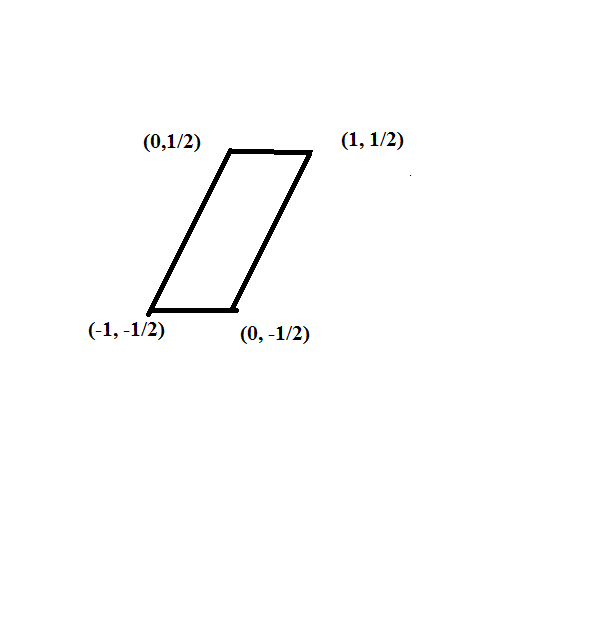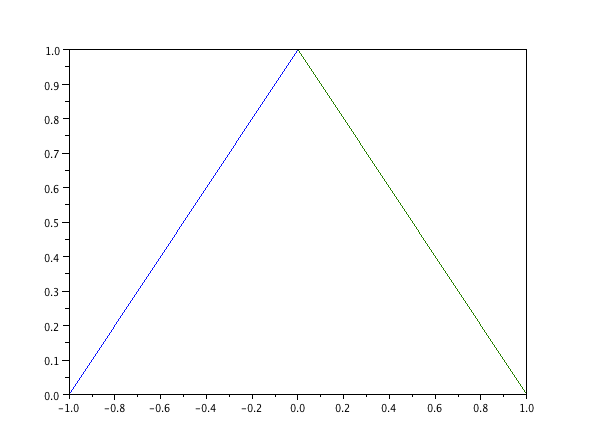Our goal: perform non-parametric statistical tests for two samples, both paired and independent. We only assume that both samples come from similar distributions, possibly shifted.
I’ll show the steps with just a bit of discussion of what the tests are doing; the text I am using is Mathematical Statistics (with Applications) by Wackerly, Mendenhall and Scheaffer (7’th ed.) and Mathematical Statistics and Data Analysis by John Rice (3’rd ed.).
First the data: 56 students took a final exam. The professor gave some questions and a committee gave some questions. Student performance was graded and the student performance was graded as a “percent out of 100” on each set of questions (committee graded their own questions, professor graded his questions).
The null hypothesis: student performance was the same on both sets of questions. Yes, this data was close enough to being normal that a paired t-test would have been appropriate and one was done for the committee. But because I am teaching a section on non-parametric statistics, I decided to run a paired sign test and a Wilcoxon signed rank test (and then, for the heck of it, a Mann-Whitney test which assumes independent samples..which these were NOT (of course)). The latter was to demonstrate the technique for the students.
There were 56 exams and “pi” was the score on my questions, “pii” the score on committee questions. The screen shot shows a truncated view.
The sign test for matched pairs.
The idea behind this test: take each pair and score it +1 if sample 1 is larger and score it -1 if the second sample is larger. Throw out ties (use your head here; too many ties means we can’t reject the null hypothesis ..the idea is that ties should be rare).
Now set up a binomial experiment where is the number of pairs. We’d expect that if the null hypothesis is true,
where
is the probability that the pair gets a score of +1. So the expectation would be
and the standard deviation would be
, that is,
This is easy to do in a spreadsheet. Just use the difference in rows:
Now use the “sign” function to return a +1 if the entry from sample 1 is larger, -1 if the entry from sample 2 is larger, or 0 if they are the same.
I use “copy, paste, delete” to store the data from ties, which show up very easily.
Now we need to count the number of “+1”. That can be a tedious, error prone process. But the “countif” command in Excel handles this easily.
Now it is just a matter of either using a binomial calculator or just using the normal approximation (I don’t bother with the continuity correction)
Here we reject the null hypothesis that the scores are statistically the same.
Of course, this matched pairs sign test does not take magnitude of differences into account but rather only the number of times sample 1 is bigger than sample 2…that is, only “who wins” and not “by what score”. Clearly, the magnitude of the difference could well matter.
That brings us to the Wilcoxon signed rank test. Here we list the differences (as before) but then use the “absolute value” function to get the magnitudes of such differences.
Now we need to do an “average rank” of these differences (throwing out a few “zero differences” if need be). By “average rank” I mean the following: if there are “k” entries between ranks n, n+1, n+2, ..n+k-1, then each of these gets a rank
(use to work this out).
Needless to say, this can be very tedious. But the “rank.avg” function in Excel really helps.
Example: rank.avg(di, $d$2:$d$55, 1) does the following: it ranks the entry in cell di versus the cells in d2: d55 (the dollar signs make the cell addresses “absolute” references, so this doesn’t change as you move down the spreadsheet) and the “1” means you rank from lowest to highest.
Now the test works in the following manner: if the populations are roughly the same, the larger or smaller ranked differences will each come from the same population roughly half the time. So we denote the sum of the ranks of the negative differences (in this case, where “pii” is larger) and
is the sum of the positive differences.
One easy way to tease this out: and
can be computed by summing the entries in which the larger differences in “pii” get a negative sign. This is easily done by multiplying the absolute value of the differences by the sign of the differences. Now note that
and
One can use a T table (this is a different T than “student T”) or one can use the normal approximation (if n is greater than, say, 25) with
and use the normal approximation.
How these are obtained: the expectation is merely the one half the sum of all the ranks (what one would expect if the distributions were the same) and the variance comes from Bernouilli random variables
(one for each pair) with
where the variance is
Here is a nice video describing the process by hand:
Mann-Whitney test
This test doesn’t apply here as the populations are, well, anything but independent, but we’ll pretend so we can crunch this data set.
Here the idea is very well expressed:
Do the following: label where the data comes from, and rank it all together. Then add the ranks of the population, of say, the first sample. If the samples are the same, the sums of the ranks should be the same for both populations.
Again, do a “rank average” and yes, Excel can do this over two different columns of data, while keeping the ranks themselves in separate columns.
And one can compare, using either column’s rank sum: the expectation would be and variance would be
Where this comes from: this is really a random sample of since drawn without replacement from a population of integers
(all possible ranks…and how they are ordered and the numbers we get). The expectation is
and the variance is
where
(should remind you of the uniform distribution). The rest follows from algebra.
So this is how it goes:
Note: I went ahead and ran the “matched pairs” t-test to contrast with the matched pairs sign test and Wilcoxon test, and the “two sample t-test with unequal variances” to contrast to the Mann-Whitney test..use the “unequal variances” assumption as the variance of sample pii is about double that of pi (I provided the F-test).



















